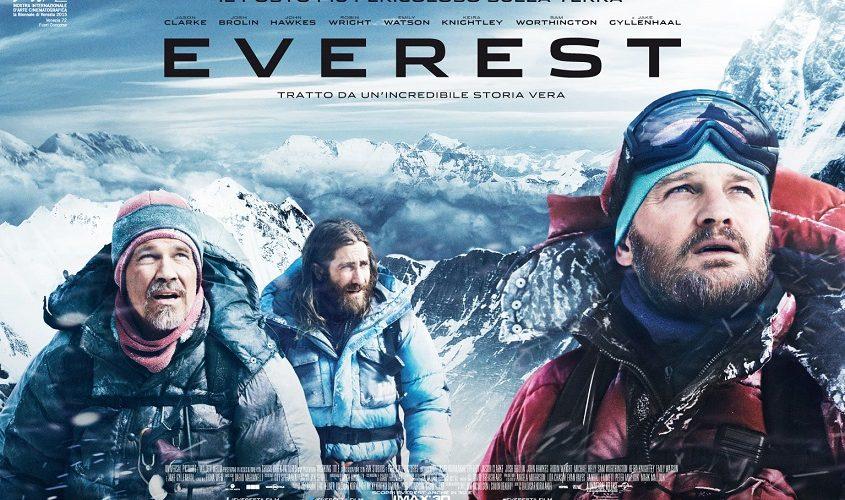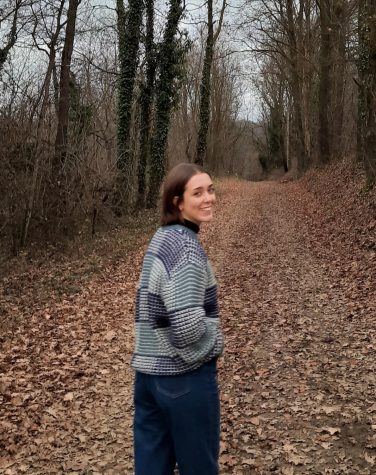Everest: Victory or Death
What drives the human mind to challenge its limits? Is it worth risking your life for an experience that could be potentially unforgettable?
These are some of the genuine questions that come to mind while watching the 2015 movie “Everest,” which follows the true story of the catastrophe that happened in 1996 on Mount Everest.
The movie, directed and produced by Baltasar Kormákur and written by William Nicholson and Simon Beaufoy, was inspired by the book, “Into Thin Air” by Jon Krakauer. Krakauer was a journalist for Outside magazine and was a participant in the expedition.
The initial purpose of his journey was to write an article about the incredible experience of reaching the highest mountain peak in the world. However, he ended up writing an entire book about a tragedy that caused the death of eight people.
This is one of the highest death rates on an expedition to Mount Everest. Although the mountaineers made some mistakes, their fate was mostly dictated by misfortune.
The entire group of alpinists was only composed of experts and professionals. The leader of the group was Rob Hall. He was known for being the man who popularized commercial Everest missions. Hall always kept his group as safe as possible.
With Hall and Krakauer, the group also included a rival chief guide named Scott Fischer, with whom Rob decided to team up. Yasuko Namba, the only woman in the group, wanted to achieve the goal of climbing seven mountains; Beck Weathers, a family man with the passion for mountaineering; and Doug Hansen, a man with a dream of touching the summit of Everest.
In the first half of the movie, there’s a story of their journey in climbing the mountain.
Initially, things seem to go quite well.
There are some setbacks once in a while, like Doug’s little sickness, poor weather conditions that make everything more difficult, or the absence of tracks along the route. However the expedition always keeps going, thanks to Rob’s experience and the help of Rob’s right arm Helen Wilton from the base camp.
Even with a slight delay, their arrival at the summit of the highest mount of Nepal on May 10, 1996 went as planned.
On their decent is when the group starts encountering major difficulties.
A disastrous storm hits the mountain bringing an incredibly chilly wind that prevents the alpinist from continuing. This second part of the movie shows the sequence of dramatic events that lead to the death of climbers.
Rob stayed behind with Doug and now they’re stuck on the top with not enough oxygen for both of them. The rest of the group is situated at a lower altitude but in an equally critical situation.
After a couple of hours, the storm doesn’t seem to stop and therefore it’s impossible for them to come down nor for helpers to come up.
A scene that really made me reflect was when Doug, who had stayed behind, finally meet with the group who was just coming down from the top. Doug is not physically well at this point and the storm is coming quickly, however, he can see the top of the mountain and when he asks Rob to accompany him to achieve his dream, the leader can’ say no.
It was an understandable decision from both parties, but probably too cheesy to challenge mother nature. As often repeated in the movie, the mountain has its own unpredictable rules and this mistake cost them dearly.
Between breathtaking landscapes and unexpected events, this movie left me speechless the entire time. One tragedy follows another and in this situation, I was naturally led to wonder if it is really worth paying $65,000 and risking your life in order to, maybe, reach the top of Mount Everest.
LHS senior Francesca Ragazzo read the book and watched the movie, and she really enjoyed both of them. However, in her opinion, the movie doesn’t tell the truth and it’s controversial in some scenes.
“When the storm is finally over from the movie it seems like the climbers were abandoned, left there to die,” Ragazzo said, “While in reality, a crew was sent to the top to try to help them several times.”
From my perspective, as a person who hasn’t read the book, it was really hard sometimes to follow the plot and not get lost in all the details and characters that are presented in a hasty manner.
After all, their death was not in vain. It helped improve the trails along the mountainside, and it made people understand that climbing Everest is not an easy game.
This movie was not unnecessary or superficial either, is a further work of documentation that capture all the agony of this catastrophe.

